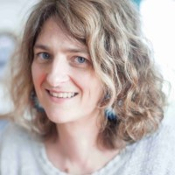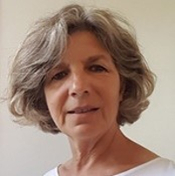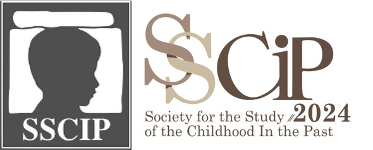|

|
Dr Mélanie Pruvost is a researcher at the CNRS and a member of UMR 5199 PACEA. She is a palaeogeneticist specialised in the study of human and animal populations.
Coordinator of the Ancestra ANR project (2015-2020), she is particularly interested in the settlement of France from the Mesolithic to the Early Middle Ages. She is also working in collaboration on the study of the evolution of the genetic diversity of certain animal species under anthropic pressure, in particular domestication.
|
Wednesday November 20th, 2024, General public conference (in French - but slides in English - open to everyone)
amphi Gintrac, Campus Victoire, University of Bordeaux:
"Ancient genomes, lost childhoods: Tracing the lives of young people in societies of the past"
Paleogenomics, the discipline that studies ancient genomes, has revolutionized our understanding of past societies. Recent advances in this field allow us not only to trace migrations and interactions between populations but also to reconstruct entire aspects of prehistoric and ancient societies, including their kinship relations and general health. But what about the children, who have often left few tangible traces for traditional archaeological research? This conference aims to explore what the genomes of the youngest members of these communities reveal about their status, social roles, and the practices they were subjected to. Through concrete examples, we will discover how ancient DNA sheds new light on the place of children throughout time, from the Paleolithic to Antiquity.
|

|
Dr Alex Ireland is a Reader in Musculoskeletal Physiology at Manchester Metropolitan University. His primary research interest is in bone adaptation to mechanical loading across the lifespan, with a broader interest in musculoskeletal growth and ageing. He is currently funded by an Orthopaedic Research UK Fellowship, and is using machine learning to develop a 3D ultrasound system allowing easier imaging of bone and joint shape in younger children.
|
Thursday November 21st, 2024, Keynote (only open to conference attendees)
Odéon, Archéopole, Bordeaux Montaigne University:
"How muscles shape the growing skeleton"
Due to the short levers muscles work with, the skeleton experiences large muscle forces equivalent to several times bodyweight during physical activity. Bones readily adapt their size, shape, and structure in response to this loading. For example, adolescent tennis players have 40% more bone in their racquet than non-racquet arm, whilst children born breech (and therefore less able to load the skeleton through kicking) have 10° higher femoral anteversion. Prenatal movements, and those associated with acquisition of motor milestones in infancy, appear to have large, persistings effect on skeletal development. In addition, the pattern of bone adaptation to loading seems highly sex and maturity specific, and for some parameters is maintained decades after cessation of activity. Therefore physical activity at different stages of childhood may leave distinct evidence in skeletal remains, even in those individuals who reached adulthood.
In this talk, I will present findings from study of living models of human loading and skeletal health across the lifespan by our group and other colleagues in the field. We will discuss how new techniques and findings in contemporary living populations can confirm and validate archaeological research into children’s lives, and in turn how archaeological study can inform modern science and medicine.
|

|
Joëlle Provasi is a senior lecturer at the École Pratique des Hautes Études and a member of the RNSR 200515259U CHArt laboratory. She is a psychologist and neuroscientist, interested in the rhythmic synchronisations of very young children interacting with their environment. She has taken part in four ANR programs, Premalocom 1 and 2, Neolocom and Memotime, focusing on children's psychomotor development and memory. She is co-inventor of a patent (no. 3637807: Device for assisting the crawling of an infant), the crawliskate marketed by VIPAMAT. She is taking part in a research program looking at motor training in high-risk preterm infants.
|
Friday November 22nd, 2024, Keynote (only open to conference attendees)
Odéon, Archéopole, Bordeaux Montaigne University:
"The influence of the maternal environment on fetal learning"
The intra-uterine environment offers the fetus a multitude of vestibular, tactile, somato-sensory, auditory, vocal, musical, rhythmic and even multi-modal stimuli. All these stimuli can vary according to the mother's activities. In the same environment, the fetus is able to perceive this wide range of stimuli, process the information, store it in its memory and discriminate between it and a new stimulus. It is also able to produce numerous motor actions, both rhythmic and non-rhythmic. The foundations of learning and memory are laid in intra-uterine life. We will also look at the role of sensory-motor synchronization in interaction and communication.





